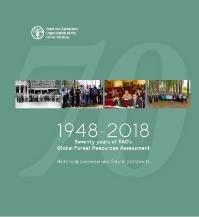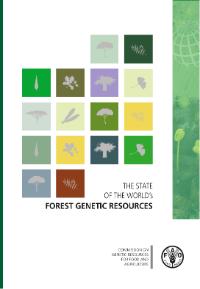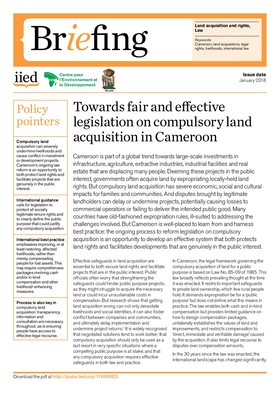The Global Forest Resources Assessment of the Food and Agriculture Organization of the United Nations (FAO) celebrates its 70th Anniversary in 2018. FAO's forestry department whishes to commemorate this important occurrence with a special publication on the history of the past 70 years of…
The State of the World’s Forest Genetic Resources addresses the conservation, management and sustainable use of forest tree and other woody plant genetic resources of actual and potential value for human well-being in the broad range of management systems. This report complements two other FAO…
The Central African Republic (CAR) has a total land area of 623,000 km2 of which close to 23 million hectares, i.e. 37%, is composed of forested lands. In the southwestern part of the country all forest operations are industrial. At present there are 11 logging companies, with an average annual…
Cameroon is part of a global trend towards large-scale investments in infrastructure, agriculture, extractive industries, industrial facilities and real estate that are displacing many people. Deeming these projects in the public interest, governments often acquire land by expropriating locally-…
The study illustrates that small holders, particularly women, are increasingly losing farmland. It questions the social development impact of large-scale land acquisitions (LSLAs) in Cameroon in terms of better living standards and reduction of poverty. It also examines how and under what…
Rangelands cover a surface area of more than 2 million hectares in Cameroon. Despite their relatively unpredictable climate and unproductive nature they provide a wide variety of goods and services including forage for livestock, habitat for wildlife, water and minerals, woody products,…







